In the arrangement shown, S is a point source of monochromatic light. S1 and S2 are two slits located sym- metrically with respect to the source with separation between themd1. Parallel to this slit plane there are two more slits (S3 and S4) at separationd2. These slits are also symmetrically located with respect to S. A screen is at a distance L2 from this slit plane. How does the intensity on the screen change with y and d1?
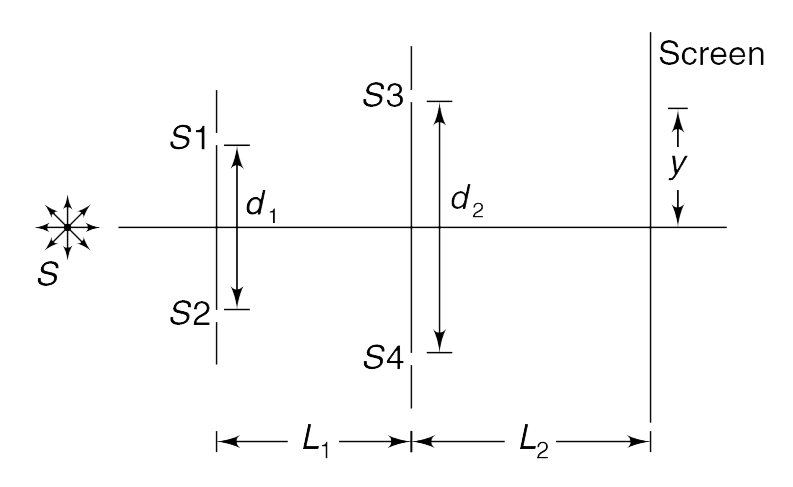
The correct Answer is:Intensity∝cos2(πd1d22λL1)cos2(πd2y2λL2)
Step by step video, text & image solution for In the arrangement shown, S is a point source of monochromatic light. S1 and S2 are two slits located sym- metrically with respect to the source with separation between them d_(1). Parallel to this slit plane there are two more slits (S3 and S4) at separation d_(2). These slits are also symmetrically located with respect to S. A screen is at a distance L_(2) from this slit plane. How does the intensity on the screen change with y and d_(1)? by Physics experts to help you in doubts & scoring excellent marks in Class 12 exams.
Updated on:21/07/2023Topper's Solved these Questions
Similar Questions
In the arrangement shown in the figure, S1 and S2 are two parallel slits at a separation d. There is a screen at a distanceD(>>d) from the slits. Two point sources A1 and A2 have been placed symmetrically with respect to the slits at a large distance with<<A1OO1=<<A2OO1=Δθ. The sources are monochromatic giving out light of wavelength l but they are incoherent. Write the intensity of light at a point P on the screen as a function of y. TakeI0 to be maximum intensity on the screen when one of the two sources (A1 and A2) is switched on. Assume y to be small.
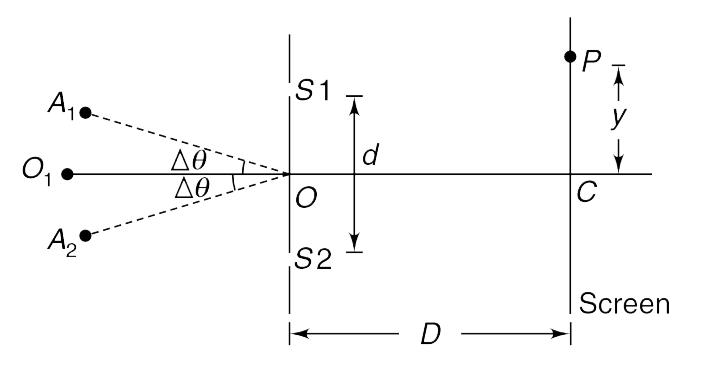
View SolutionIn an interference experiment, the two slits S1andS2 are not equidistant from the source S. then the central fringe at 0 will be
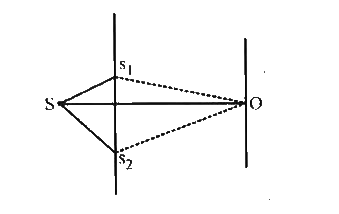
View Solution
Knowledge Check
_E01_029_Q01.png)
In YDSE, the source placed symmetrically with respect to the slit is now moved parallel to the plane of the slits it is closer to the upper slit, as shown thenAthe fringe width will increase and fringe pattern will shift downBthe fringe width will remain same but fringe pattern will shift upCthe fringe width will decrease and fringe pattern will shift down.Dthe fringe width will remain same but fringe pattern will shift down.Monochromatic light from a narrow slit illuminates two parallel slits producing an interference pattern on a screen. The separation between the two slits is now doubled and the distance between the screen and the slits is reduced to half. The fringe width
Ais doubledBbecomes four timesCbecomes one - fourthDremains the sameIn the set up shown in figure, the two slits S1 and S2 are not equidistant from the slit S. The central fringe at O is then
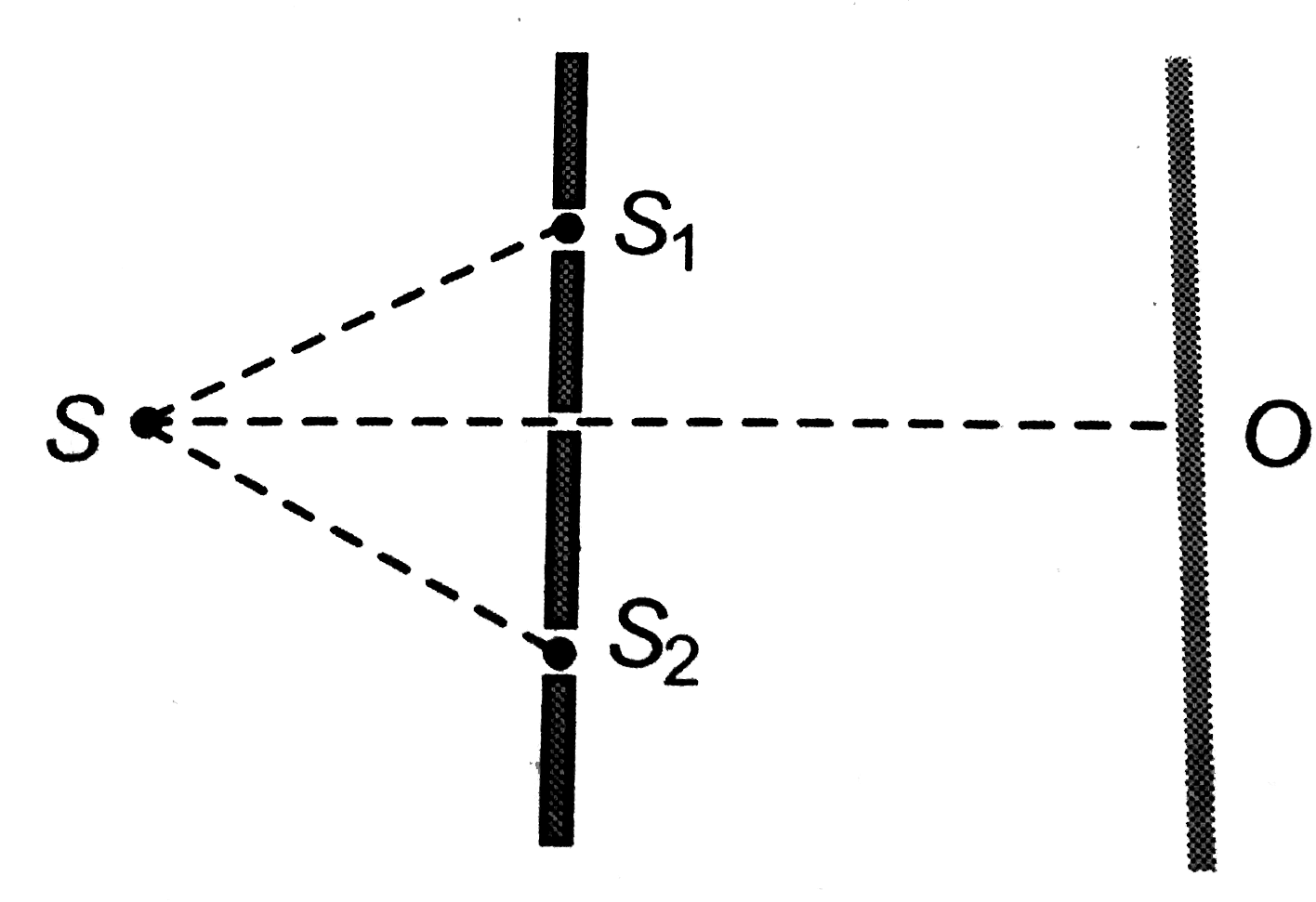 A(a) Always brightB(b) Always darkC(c) Either dark or bright depending on the position of SD(d) Neither dark nor bright
A(a) Always brightB(b) Always darkC(c) Either dark or bright depending on the position of SD(d) Neither dark nor bright
(b) If the principal source point S was to be moved a little upwards, towards the slit S1 from its usual symmetrical position with respect to the two slits S1andS2 discuss how the interference pattern, obtained on the screen, would get affected.
View SolutionTwo ideal slits S1 and S2 are at a distance d apart, and illuninated by light of wavelength λ passing through an ideal source slit S placed on the line through S2 as shown. The distance between the planes of slits and the source slit is D.A screen is held at a distance D from the plane of the slits. The minimum value of d for which there is darkness at O is (d<<D)
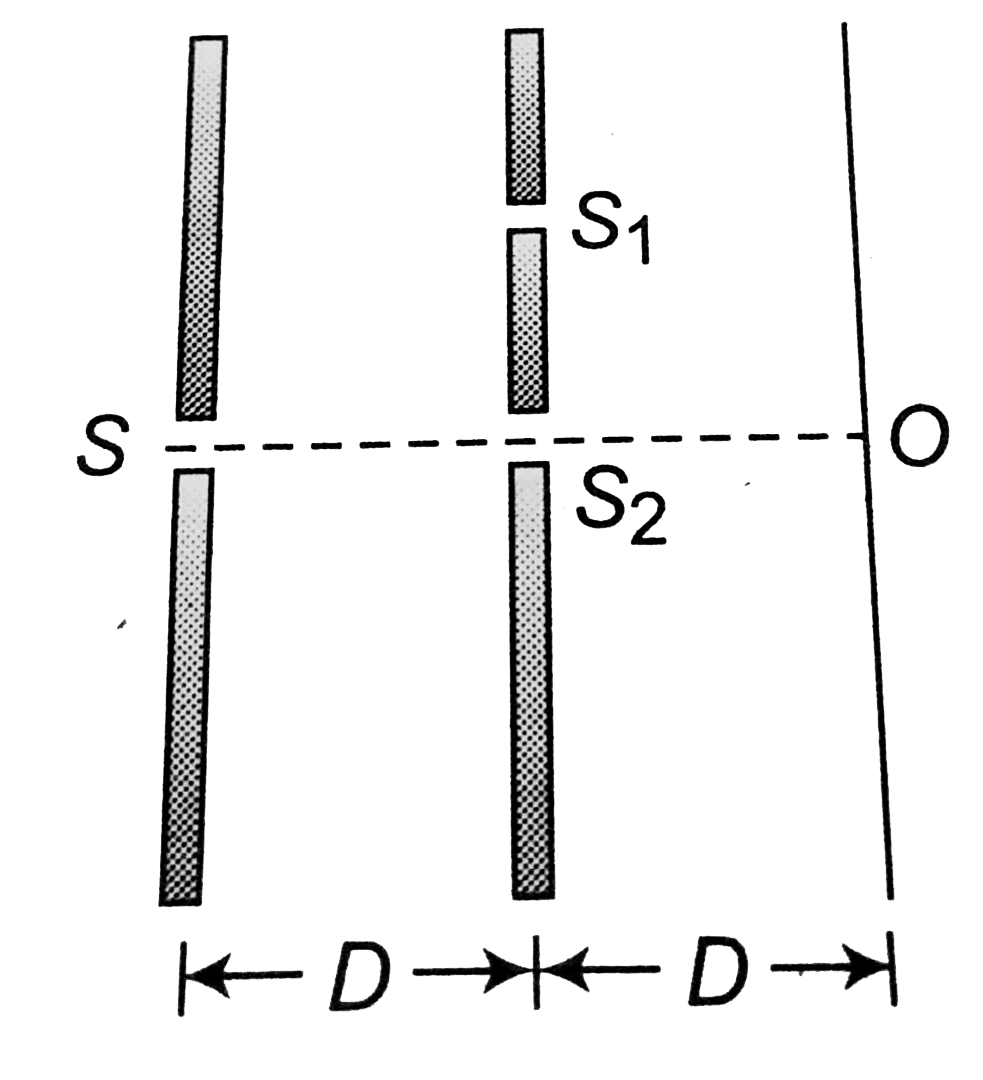
View SolutionTwo coherent point sources S1andS2 are separated by a small distance 'd' as shown. The fringes obtained on the screen will be :
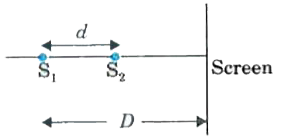
View SolutionTwo coherent point sources S1 and S2 are separated by a small distance d as shown. The fringes obtained on the screen will be
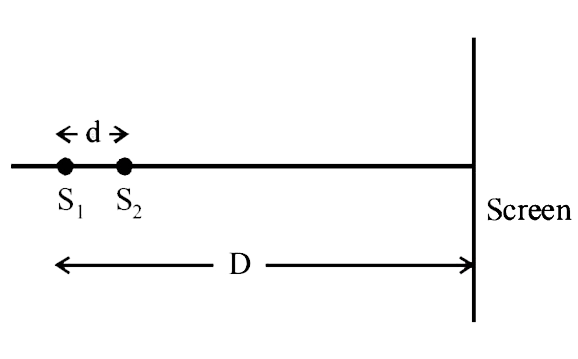
View SolutionIn Young's double-slit experiment, white light is used. The separation between the slits is d. The screen is at a distance D (D » d) from the slits. Some wavelengths are missing exactly in front of one slit. These wavelengths are
View Solution
